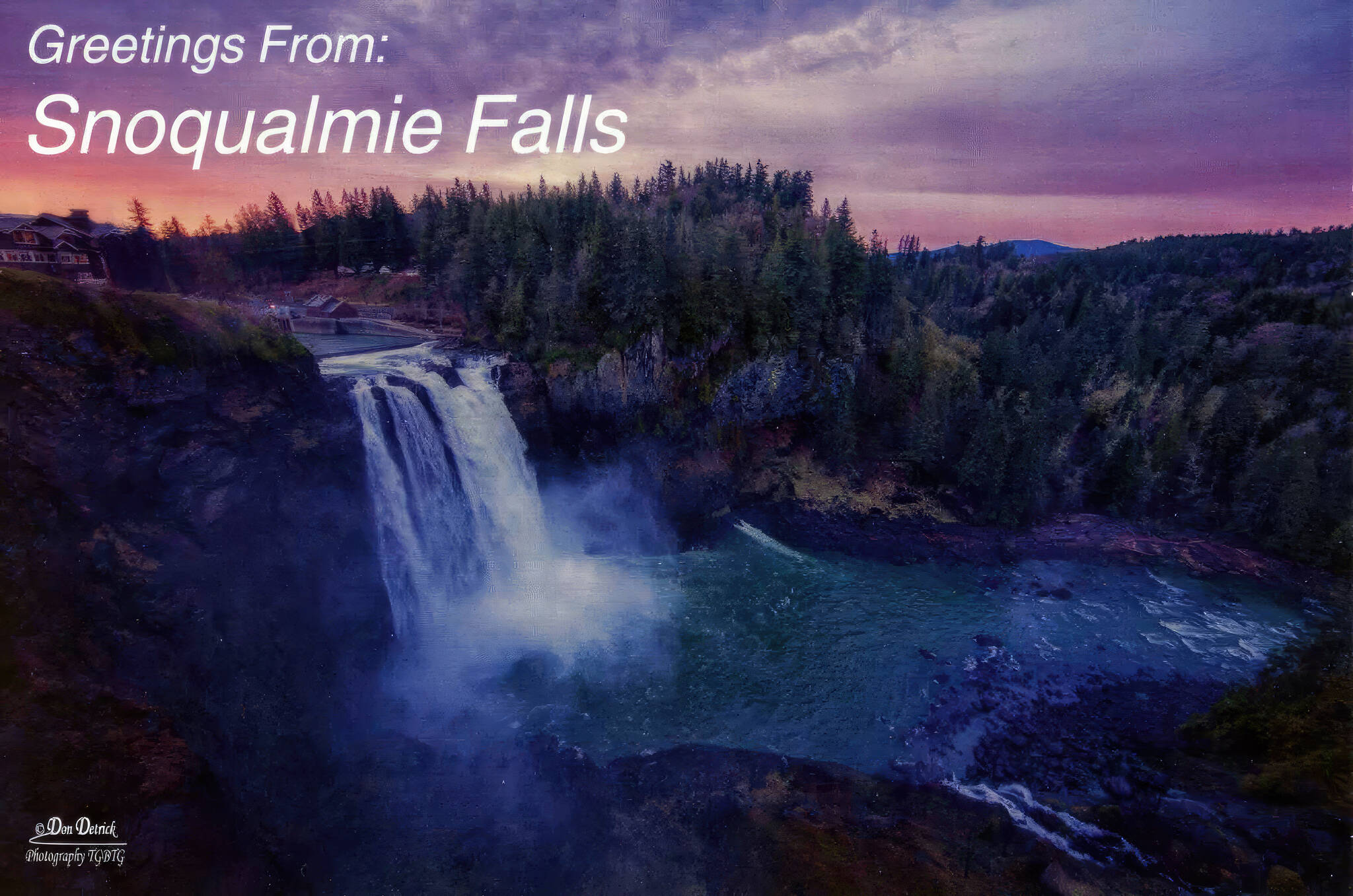Snoqualmie Falls is one of the most popular tourist attractions in Washington. It is, in fact, the second most visited site in the state next to Mount Rainier.
At 268 feet, it is more than twice as high as Niagara Falls. Experiencing the mist and the roar of the cascading water from the viewpoint is powerful. I never tire of introducing out-of-town guests to the breathtaking beauty of this natural landmark.
My favorite photo of “Sno Falls” was taken by my friend Don Detrick and is featured on a postcard. Whereas Snoqualmie Falls is surprisingly higher than Niagara Falls, the latter is significantly wider. At 2,200 feet, it is an impressive vista to behold. And the thought of traversing the width of the falls is almost inconceivable.
You probably remember when Nick Wallenda, of the Flying Wallenda family, achieved this death-defying feat in 2012. But he wasn’t the first. Have you ever heard of Charles Blondin? In 1859, this French acrobat walked on a tightrope 160 feet above Niagara Falls several times back and forth between Canada and the United States. As huge crowds looked on, Blondin dazzled them with dramatic daredevil exploits. He crossed blindfolded, once on stilts, another time on a bicycle and once he even carried a stove and cooked an omelet!
As legend has it, Blondin asked the growing gallery of gawkers if they believed he could push a wheelbarrow across the chasm on the highwire. When the crowd enthusiastically confessed their belief, the fearless performer said, “If you believe, are you willing to get in the wheelbarrow?” Gulp!
Ever since I was a young man contemplating a career as a pastor, I’ve heard that illustration repeated time and again. Although a bit hyperbolic, it attempts to describe the difference between belief and faith. Whereas belief attests to the possibility of a given outcome, faith rests its weight in the process. I can say I believe a chair will hold me up. However, I translate my belief into faith by actually sitting in the chair.
Believing is relatively risk-free. We can say we believe most anything.
But faith comes with a cost. Faith demands you act on what you claim to be true. As such, faith can be life-altering.
For Christians around the world, this is the season on the liturgical calendar known as Lent. It is that period of six weeks set aside for personal introspection. Followers of Jesus are invited to reflect on his invitation: “If anyone would be my disciple, let him deny himself and take up his cross and follow me.”
Lent is an opportunity to differentiate between mental assent to theological affirmations and putting into practice personal convictions that influence our behavior. The journey of Lent is often associated with fasting from something central to our daily routine. It can mean giving up caffeine or alcohol or chocolate. Some friends of mine choose to fast from Facebook. Others choose to incorporate something new into their lives as a means of drawing nearer to God. Such spiritual disciplines might include reading through the entire New Testament, doing a weekly prayer walk or keeping a gratitude journal. It could also involve volunteering at a neighborhood food kitchen, distributing socks in a homeless encampment or visiting shut-ins in an adult family home or care center. As you might surmise, I’m grateful for this season of the year.
Like Snoqualmie Falls, Lent provides a bird’s-eye perspective. It gives us a vantage point of the churning white-capped world in which we attempt to find our faith-footing and balance our lives.
Guest columnist Greg Asimakoupoulos is chaplain at Covenant Living at the Shores in Mercer Island.




